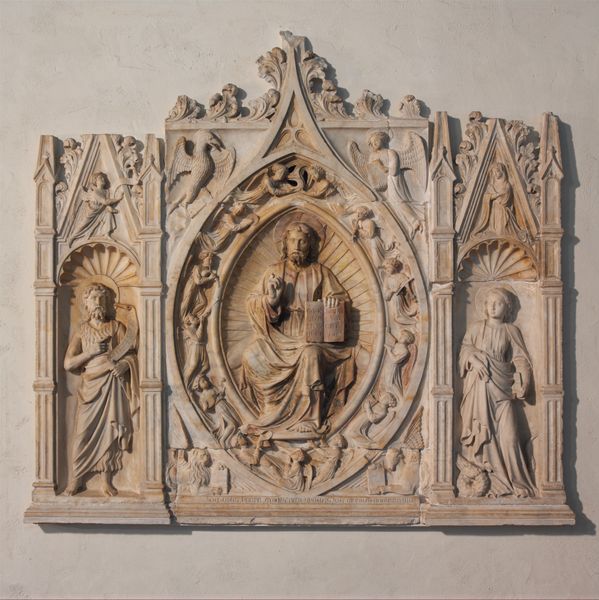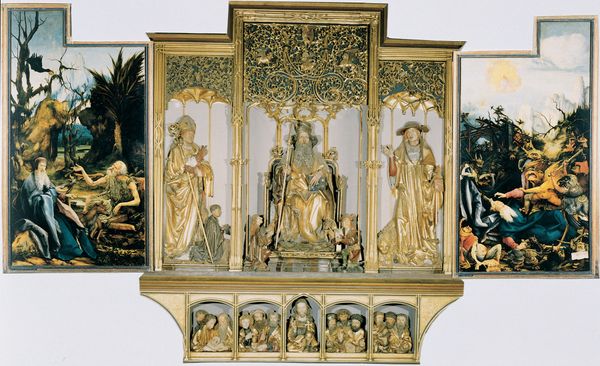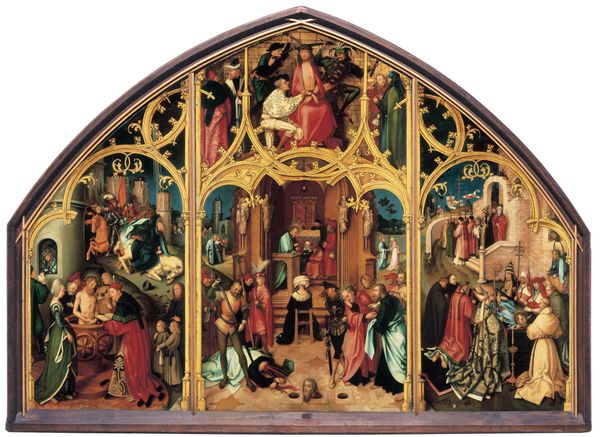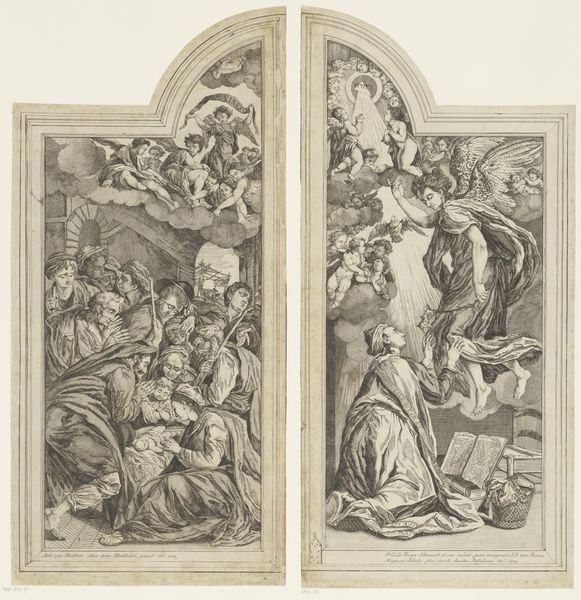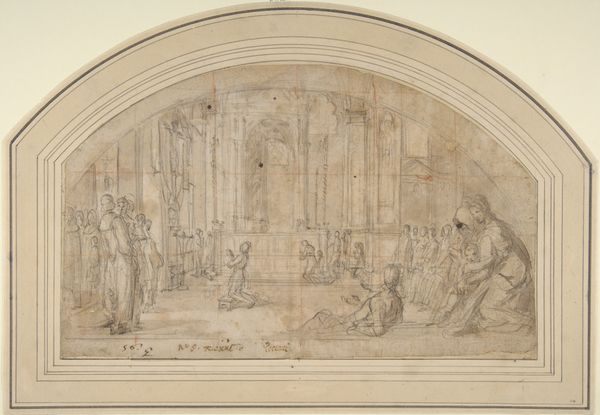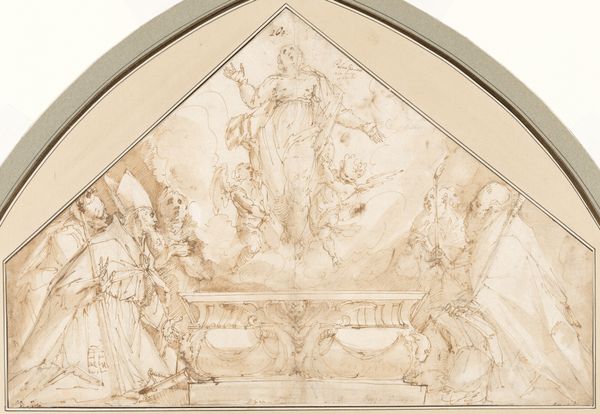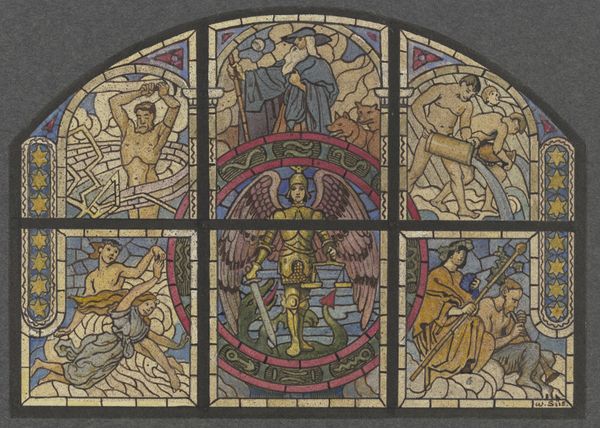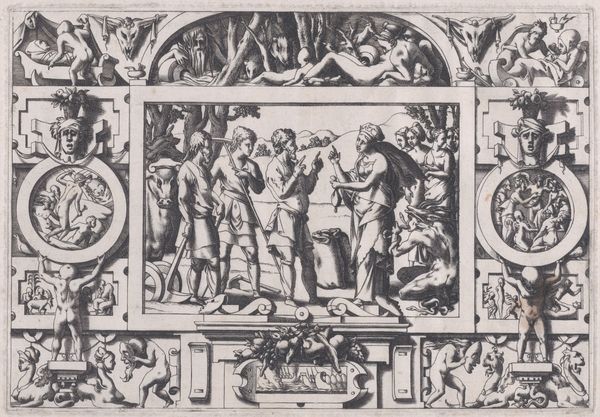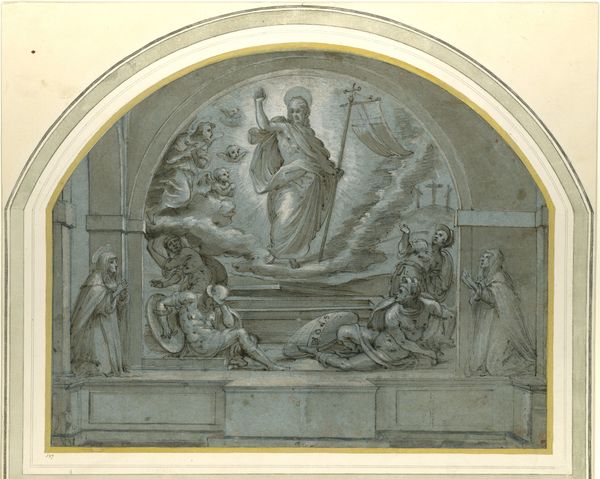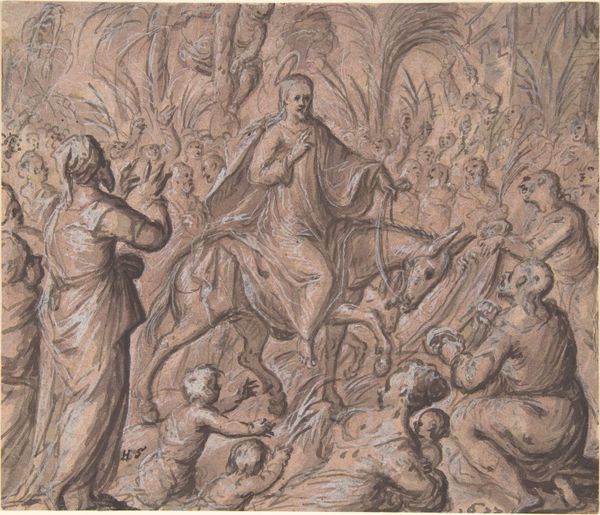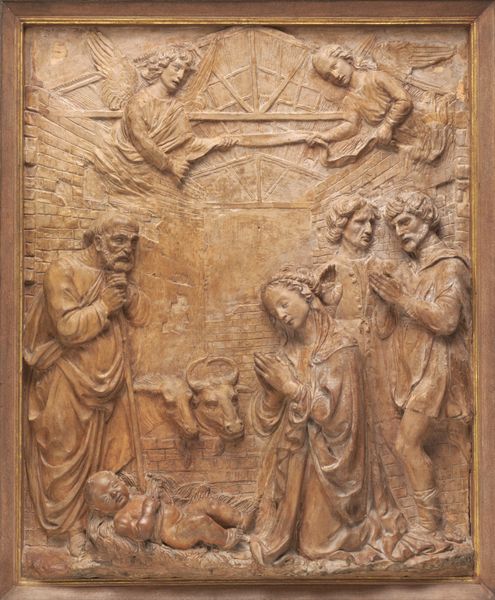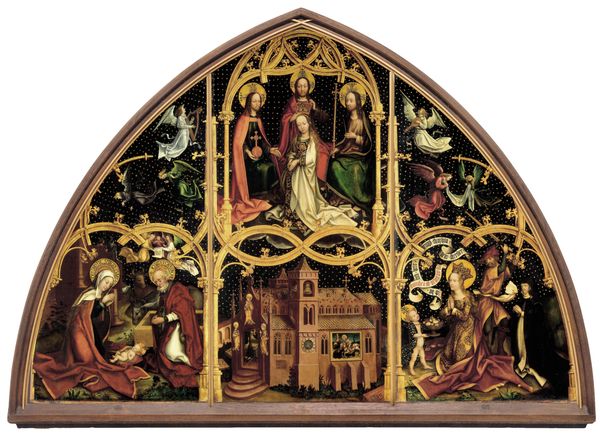
drawing, relief, sculpture
#
drawing
#
medieval
#
narrative-art
#
sculpture
#
relief
#
traditional architecture
#
sculpture
#
history-painting
Dimensions: overall (rounded top edge): 15.9 x 18.3 cm (6 1/4 x 7 3/16 in.)
Copyright: National Gallery of Art: CC0 1.0
Curator: Before us, we have a work titled "Four Scenes from the Life of Christ," dating from before 1870, created by Georges Hurtrel. It appears to be a drawing of a sculpted relief. Editor: Immediately, the arrangement grabs me—the piece is divided into four distinct scenes, almost like a comic strip telling a story, but the cool, muted tones give it a very somber, almost stone-like feel. Curator: Indeed. The arrangement is quite deliberate. Each scene likely references key events from the New Testament. If we start from the top left, we seem to be witnessing Christ's entry into Jerusalem, followed by the Cleansing of the Temple. Below, it seems we see Christ and Mary Magdalene, perhaps, followed by what looks like the Last Supper, or a related communal meal. Hurtrel's artistic decision to represent them in this way evokes early Christian and Medieval imagery, referencing traditions of religious storytelling. Editor: Absolutely, and those recurring halos really emphasize the divinity imbued within these narratives. Thinking about the materials though, it's intriguing to consider how Hurtrel replicated the look of stone relief with a drawing. This raises questions about his process, the materials used, and the labour involved. Why represent sculpture through drawing? What’s gained, or lost, in this act of translation from one medium to another? Does the replication invite an economic critique—drawing standing in for, making accessible, an artform primarily accessible only to elites who commission monumental stone works? Curator: That's a compelling consideration of artistic agency within society. Also note, each scene, though contained, still leads our eye to the next. See how figures gaze or point into another section of the picture plane. The narrative feels very cohesive as we process it. There’s something both familiar and profoundly moving in seeing these key events chronicled so elegantly. The stylistic choice creates a contemplative mood. Editor: It’s interesting to think about this choice of presenting narrative too. By organizing the composition as four discreet cells, perhaps Hurtrel is intentionally alluding to the methods and material culture of book illustration. In a similar vein, consider the colour! By limiting his palette so dramatically, Hurtrel focuses us on the texture of the stone. The drawing, as you’ve noted, encourages contemplation by reminding us that faith is both durable as stone and light as parchment. Curator: Indeed, and whether intentional or not, that resonance of material memory further strengthens the drawing's emotional and symbolic weight. Editor: This artwork provides layers for interpretation—not just through its imagery but through its commentary on materiality and artistic accessibility. Curator: A potent combination, I'd say, rendering this representation both art historically significant and quietly profound.
Comments
No comments
Be the first to comment and join the conversation on the ultimate creative platform.


